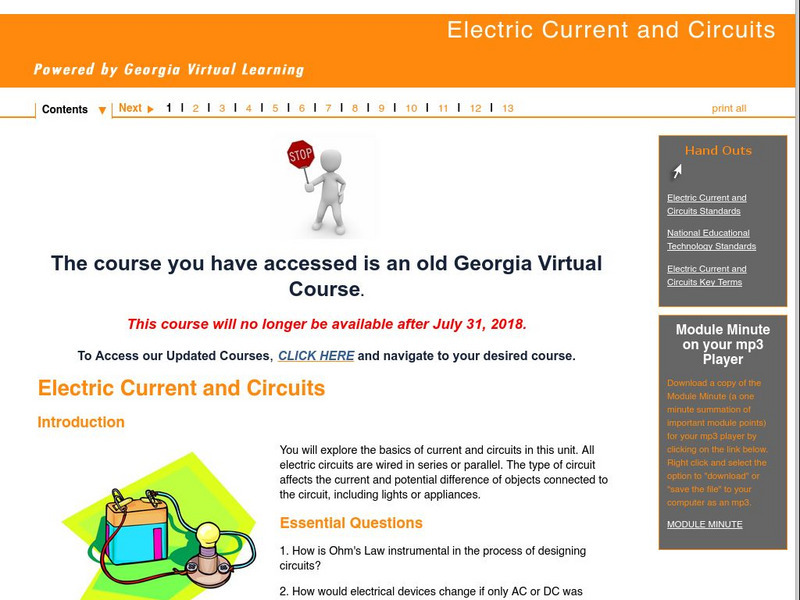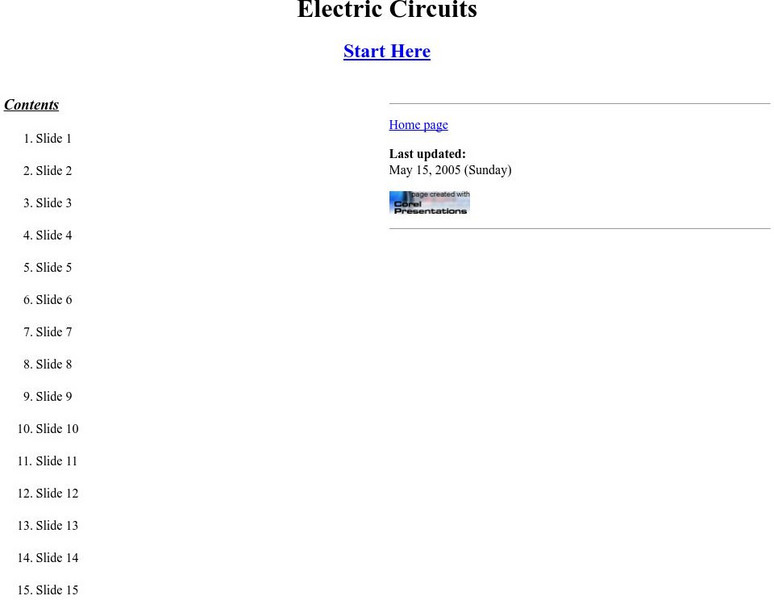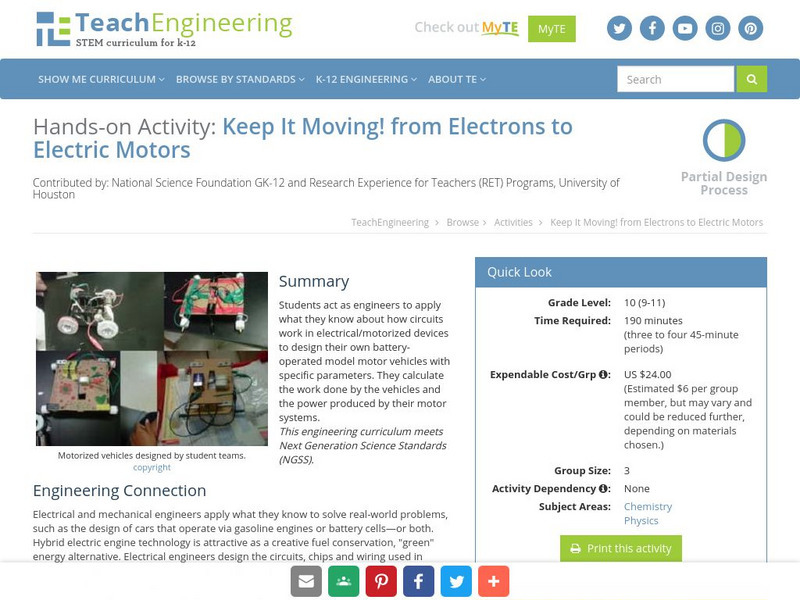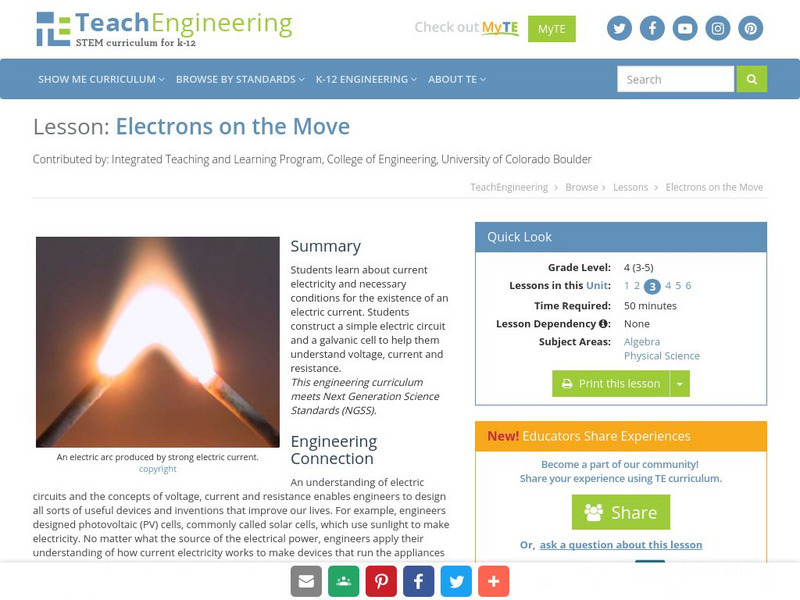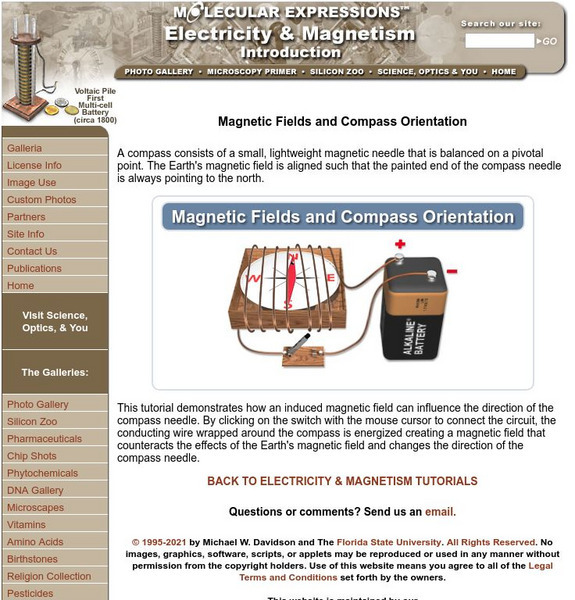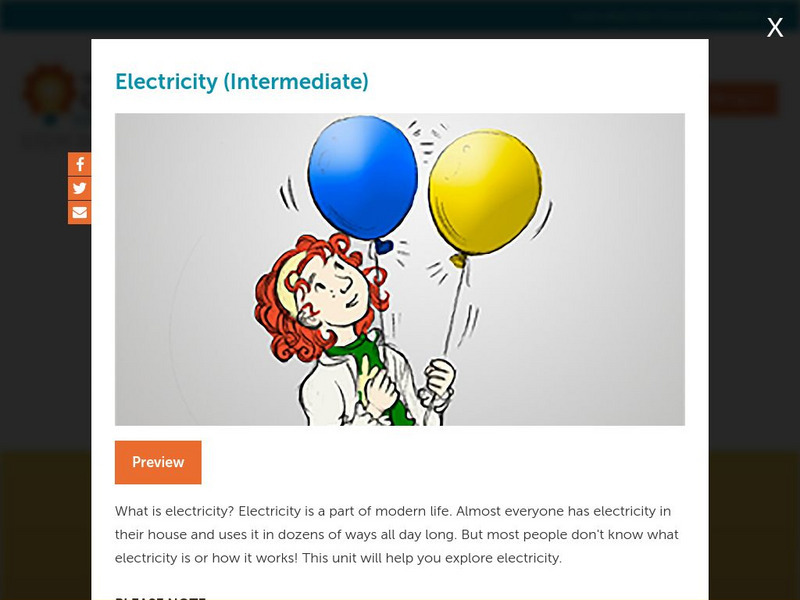Science Education Resource Center at Carleton College
Serc: Investigating Electricity
For this interactive activity, students will explore electricity and be able to design and create a complete electrical circuit. Students will also learn what is necessary to light a light bulb. Creative thought, ideas, and,...
TryEngineering
Try Engineering: Series and Parallel Circuits
The core of this lesson plan is simple circuits and the differences between parallel and series circuit design. Students perform experiments to test the differences between the two circuit designs using low voltage light bulbs.
Exploratorium
Exploratorium: The Tinkering Studio: Circuit Boards
Some history behind the function of the circuit board, with a guided activity guide for students to download.
Georgia Department of Education
Ga Virtual Learning: Electric Current and Circuits
Students have the opportunity to explore the basics of current and circuits in this online module. Some of the activities include interactive animations, informational text, practice problems, and lab experiments.
Other
Electricity: Simple Circuits
Create your own simple electric circuit. Using simple supplies build your own battery and investigate conductivity. You can also construct a crossword puzzle with electrical vocabulary words.
Upper Canada District School Board
Tom Stretton's Chemistry Pages: Electric Circuits
Learn the voltage formula for determining a measure of current electricity in this illustrated presentation.
TeachEngineering
Teach Engineering: Completing the Circuit
In the everyday electrical devices we use - calculators, remote controls and cell phones - a voltage source such as a battery is required to close the circuit and operate the device. In this hands-on activity, students use a battery,...
Science Education Resource Center at Carleton College
Serc: Investigating Electricity: Building Circuits in Elementary Science Class
In this exploration activity, students compare the difference between series circuits and parallel circuits using wire, light bulbs, and D batteries.
E-learning for Kids
E Learning for Kids: Science: Norway: What Happens When Parts of a Circuit Are Changed?
Join Mathias as he takes care of the electrical problems in his uncle's office. Help him figure it out, and fix the lights.
Project Britain
Primary Homework Help: Electricity Questions
Brush up on electricity facts before taking this interactive quiz. Students can get immediate feedback by checking the answers after each question.
Science and Mathematics Initiative for Learning Enhancement (SMILE)
Smile: Electron Current Flow
A teacher lesson plan which could be easily converted into an idea for a student project or presentation. This page describes an activity in which the water-electricity analogy is used to investigate the relationship between current,...
TeachEngineering
Teach Engineering: Put a Spark in It! Electricity
Uncountable times every day "with the merest flick of a finger"each one of us calls on electricity to do our bidding. What would your life be like without electricity? Students begin learning about electricity with an introduction to the...
TeachEngineering
Teach Engineering: Introduction to Circuits and Ohm's Law
Students will explore the basics of dc circuits analyzing the light from light bulbs when connected in series and parallel circuits. Ohm's Law and the equation for power dissipated by a circuit will be the primary equations used. Using...
CK-12 Foundation
Ck 12: Series Circuits
[Free Registration/Login may be required to access all resource tools.] Using diagrams, video clips, and informational text, students learn how electrical current flows through a series circuit.
TeachEngineering
Teach Engineering: Keep It Moving! From Electrons to Electric Motors
Students act as engineers to apply what they know about how circuits work in electrical/motorized devices to design their own battery-operated model motor vehicles with specific paramaters. They calculate the work done by the vehicles...
CK-12 Foundation
Ck 12: Parallel Circuits
[Free Registration/Login may be required to access all resource tools.] In this module, students learn what a parallel circuit is and how it differs from a series circuit.
Science and Mathematics Initiative for Learning Enhancement (SMILE)
Smile: Series and Parallel Circuits
A teacher lesson plan which could be easily converted into an idea for a student project or presentation. Ideal for pre-high school students. This page describes an activity in which the history of electric circuits, the nature of...
Hunkins Experiments
Hunkin's Experiments: Electric Shocks!!
Hunkin's Experiments is a group of simple cartoon illustrations of scientific principles. Some would work well in the classroom, but others have little value beyond entertaining students. All of the projects are easy to do. These...
TeachEngineering
Teach Engineering: Electrons on the Move
Students learn about current electricity and necessary conditions for the existence of an electric current. Students construct a simple electric circuit and a galvanic cell to help them understand voltage, current and resistance.
CK-12 Foundation
Ck 12: Physics Simulation: Marquee Lights
[Free Registration/Login Required] Learn about different ways you can wire an electric circuit, and how the brightness of the lights depends on how they are configured using this interactive simulation. A PDF worksheet and a video...
Open Curriculum
Open Curriculum: Electricity and Circuits
This article helps students understand the concepts of electricity and circuits.
Florida State University
Florida State University: Molecular Expressions: Magnetic Fields and Compass Orientation
Simulate the creation of an induced magnetic field through the use of a simple electric circuit. An interactive demonstration is included.
Concord Consortium
Concord Consortium: Electricity (Intermediate)
Explore how electricity works in this module. (Requires Java)
Khan Academy
Khan Academy: Calculations From Circuit Diagrams
Practice calculating potential difference, resistance, and current for a component from a circuit diagram.



